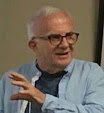Eighty years ago, September 29-30, 1941, the killings at Babi Yar began with the mass execution of 34,000 Jews. The estimated total of those who were massacred at this site now stands at between 100,000 and 150,000. I wrote this shortly after visiting Babi Yar in 1990.
Outside the lovely city of Kyiv a towering and stark monument rises tragically from the depths of a vast pit. Tangled human bodies reach upward into the weeping sky. Some are strong Ukrainian sailors. One is a defiant young woman. They are Jews and homosexuals. A mother raises her child in desperation as she is pulled downward. An old man — dead — slides back into the pit. Clinging to him is another woman, not comprehending the magnitude of this savagery. She too is being sucked into the muddy, bloody oblivion of Babi Yar.Busloads of visitors approach the monument in silence. They walk quietly around the pits. Laying stones and flowers on the inscribed plaque, some fall to their knees. Some weep softly to themselves. Some gently intone the Mourner’s Kaddish, the daily prayer to be prayed at the death of a loved one.
There is no record of the names of all who were slain here. In the first five days, more than 55,000 died. Soldiers were told to conserve bullets by shooting two or three at a time. They were ordered to throw children in alive. Witnesses tell us these soldiers grew weary of the bloodletting but were encouraged to be strong. “Let your will overrule your heart,” they were told. “Do not be swayed by children, old people, or women. Kill them all. After the war, a new world will dawn for you and your families. You will settle new lands. You will be cleansed and purified of these horrible deeds.”The soldiers were implementing the Nazi’s Ost (East) Plan, a
plan that had been carefully and rationally developed long before any shooting
began. They were to eliminate 100% of the Jews, and 85% of the Ukrainians,
Russians, Poles, and Byelorussians. The remaining 15% were to become slaves of
the Reich.
This slaughter really happened. This really happened in our
time. Intelligent human beings, lovers of Beethoven, Bach and Mozart,
rationally decided to exterminate and proceeded to enslave races and nations of
peoples. Against all objections about the gross inhumanity of such a project,
they counseled, “Let your will overrule your heart.”
Memorials such as Babi Yar are proliferating the world over.
No longer tributes to heroic victories, our monuments increasingly offer poignant
witness to immense tragedies. Each gives testimony to the violence and suffering that
continues to engulf the world. Each represents the heart’s response to the will’s
assertion. Each protests, for all to hear, “Never again! We will not forget!
Never again!”
It would be less disturbing if this calculated and loathsome
brutality were confined to one era, ideology, or circumstance. Then we could
isolate and analyze it as a grievous aberration. But sadly, the holocaust did not
end. Shoah continues. Other names and nations now offer other rationales but killing
fields multiply. From Siberian river camps to Rwandan farmlands, Bosnian
highways to Kampuchean forests, urban centers to remote tribal regions, human
beings have savaged each other and destroyed all pretense to innocence. We have
done it for many different “reasons” and we have done it unto the least of our own.
Is there another way?
In a small village in Kenya, an African woman was carving a sculpture
outside her thatched house. She was wearing a dress so colorful that the rainbow would be jealous. A visitor, Sue
Monk Kidd, engaged her in conversation:
‘This is Ujamaa,” came the reply. “What is ‘Ujamaa’?”
"Ujamaa means family.”
“Your family?”
“No. God’s family.”
Would you like to know what God’s family looks like? It is
not unlike the monument at Babi Yar, yet there is a profound and life-affirming
difference. Imagine an ebony totem. Sitting at the base are five human figures.
Sitting on their heads are five more, and on their heads are
five more. It could go on indefinitely.
If you saw it, you would be struck by how inextricably all these
figures are intertwined. They grow out of one another. Their heads join, their faces
blend. One person’s foot flows from another’s hand. All their arms wrap around
one another like vines encircling a great tree. This is God’s Ujamaa. This interconnected
human mass is not sliding into a pit, but rising toward the sun, not collapsing
from despair but energized by fellow feeling. Where is God in this Ujamaa? Not presiding
in some distant realm but within and between all the figures of the sculpture.
Ujamaa and Babi Yar are two striking images of the human race,
and both are true. Both evoke the most profound emotions. Through memorials and
monuments, we remind ourselves of our capacity to inflict or suffer great harm. Through
finely worked art we recognize deep and sacred ties that bind us together. Which
image controls the future?
If we were not Ujamaa, would we weep at Babi Yar?
Said Ms. Kidd upon seeing the Kenyan Ujamaa, “This image shattered
my illusions of my separateness. It pried open my heart. How can I not help but
twine my arms around this vast family?”
Can we stop the violence and halt the bloodshed? I don’t
have mega-answers to the mega-suffering of our time. I do know it is time to allow
our hearts to overrule our wills.
© Gilbert Friend-Jones, Faith in A Minor Key.















No comments:
Post a Comment